This piece on Fort Kochi appeared in HT Cafe on Saturday as ‘Historical Potboiler’…
Walking out of St. Francis church, I see a tour guide escort a group of British visitors into the building, leading them to a flight of steps to sit on comfortably while removing their shoes. “In India it is customary to remove shoes before entering any temple”, he informs them solemnly, speaking with a strong Malayalam accent. It is interesting how India swallows up centuries of foreign influence; churches become temples and English is embraced at one fell swoop into the numerous local dialects and accents of the country.
It is not just foreign languages which have found a home here in Fort Kochi. Cut to almost five centuries ago; Vasco Da Gama the Portuguese explorer died on his third visit to India and was buried initially in the same church which he had helped build. His remains were shipped off to Lisbon and today, St. Francis Church contains only his empty burial vault. When I enter, a children’s choir practice session is on and I can hear high-spirited giggles following me as I walk around. Despite that, and the buzz of the cleaners and carpenters working on the renovation, the interiors are quiet and peaceful. The high wooden ceilings and the brilliant stained glass windows have clearly withstood centuries of such well-meaning restoration and repair.
Fort Kochi withstands, that is for sure. The Chinese, the Portuguese, the Dutch and the British have all been here and left their signatures. And those define the essence of Fort Kochi today along with the diverse Hindu, Jewish and Christian flavors, all processed through a uniquely Indian prism. It was in the early 16th century that the Portuguese built Fort Immanuel and established Fort Kochi (till then an insignificant fishing village) as one of the primary trading spots in India. The Dutch took over from the Portuguese a century later and Fort Kochi continued to flourish under them, and later under the British.
Fort Kochi could be charming, with centuries of history and culture squeezed tight within a few square kilometers of narrow lanes all leading to the sea. And it indeed is, despite the empty coconut shells strewn everywhere, and the wheedling tourist guides and trinket vendors. Just as I get off the car at the main Vasco Da Gama Square (Vasco remains a very popular visitor), I catch sight of the idle Chinese fishing nets, waiting for the tourists and the tide to begin their descent into the sea.
These picturesque nets operating on a simple cantilever system came along with the first visitors from the court of Kublai Khan in the early 15th century. Many of them lie broken today, and my driver says that few local fishermen know how to repair them. The ones in good condition are a major attraction, cleverly trapping fish and tourists alike. There are stalls right behind the nets ready to cook the fish caught fresh – “you buy, we cook”. A couple of fishermen notice me looking at the nets and offer a demo; they are taken aback when I bargain with them in Tamil and quickly bring down their price to “for you only two hundred rupees madam”.
If Chinese and Portuguese tones are in the air on this side of the island, on the other side of Fort Kochi is Jew Town. This part of Kochi was home for several generations of Jews who first came to India seeking trade relations during the time (or so it is believed) of King Solomon’s reign in Israel. Most of the Jews have moved out of India, and the few remaining think of Malayalam as their own language. Today, Jew Town is known for its array of antique shops with eye-catching displays spilling over to the street.
There is a statue of goddess Lakshmi in a bright red sari standing on a pink lotus, there are Ganeshas in various shapes and sizes, there are boxes of spices and exotic Indian perfumes, there are brass and bronze utensils, there are travel guidebooks scattered carelessly. Most of the stuff is kitschy and I spend the morning in the shops utterly fascinated. Just as I am wondering who actually buys such things, a couple dressed in identical khaki capris and white t-shirts walk out of a shop with an unidentifiable large wooden knick-knack and rejoin their group cooling off in the shade with lassi and paper fans.
Jew Town also boasts of the oldest Synagogue in the country, built in 1568 and decorated with incredibly blue Chinese tiles and Belgian chandeliers. The synagogue experience however is a bit of a let-down, since most of it seems off-limits to visitors, especially Indians who are not part of a guided tour. Not so the nearby Mattanchery Palace (also known as Dutch Palace), which is now also the local archaeological museum with rare photographs and notes about the long and convoluted history of this tiny island. For an entry fee of Rs.2, I spend an hour gazing at the vast collection of arms and coins and palanquins, and more delightfully the murals in the first floor and the basement (reached by narrow steep steps from inside the museum). Most of the murals depict scenes and stories from the Ramayana. One large wall contains only a few desultory sketches today, but sometime in the past hosted a series of murals depicting the entire story of Kalidasa’s Kumarasambhava.
The murals are breath-taking in their detail, with their rich vermillons and vibrant ochres and deep reds of vegetable dyes. Interestingly, the blues and indigos, so much a feature of mural work in the North and West, especially Rajasthan, are prominently missing here; only one solitary figure of Vishnu carries dark greens, and that looks too fresh to have been painted centuries ago. The basement also has an inside room depicting what can only be described as the Kamasutra of the gods; Siva playing with Vishnu-Maya as Parvati looks on in anger and envy, in one; Siva playing with Parvati herself seated on his lap, in another. And Krishna in rasa-leela, the gopis dancing intoxicated by love and lust for him.
By then I am feeling slightly claustrophobic but as I walk up the steps into the fresh air, I take a moment to utter a silent prayer in gratitude that these have endured the test of time. Like everything else in Fort Kochi.
Travel Information
How to get there: Fly in to Kochi International airport and take a pre-paid cab to Fort Kochi, roughly an hour’s drive away. You can take the longer route by road or a boat from the main jetty in Ernakulam. The best way to explore Fort Kochi is on foot since all main attractions are within walking distance.
Where to stay and shop: It is best to stay in Fort Kochi for a couple of nights, though it is possible to stay in Ernakulam and visit this area by day. If you want a moderately priced place, stay at the RainTree Lodge close to the main Square, run by the friendly Edgar. Or indulge and stay at one of the sprawling heritage properties right by the backwaters, Old Harbour Hotel or Brunton Boatyard (both Rs.7500 upwards a night). Shop at Fort Kochi for spices and nuts, and around Jew Town area for antiques and curios.
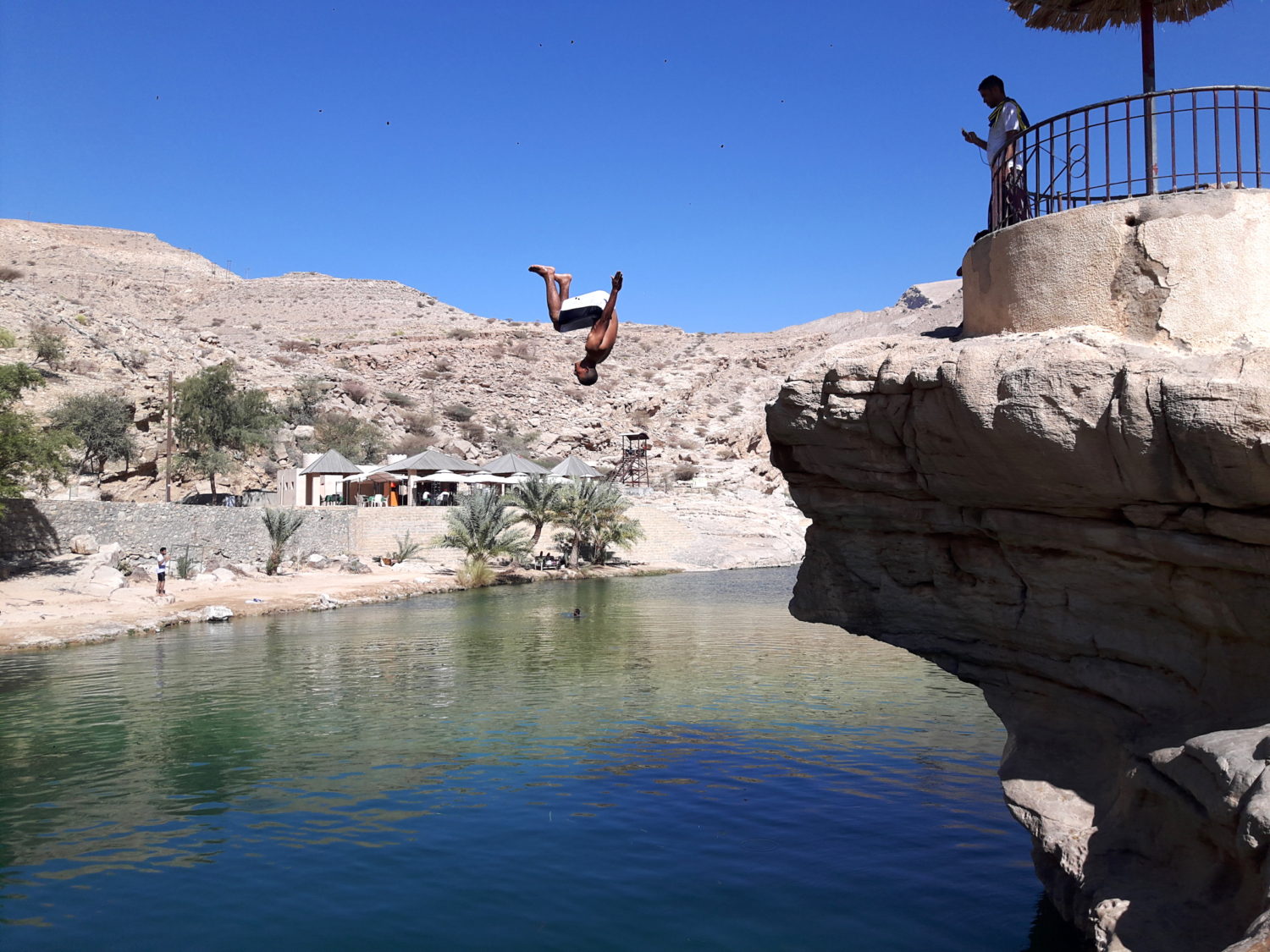

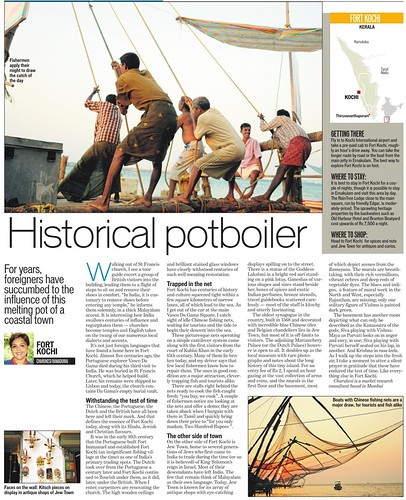

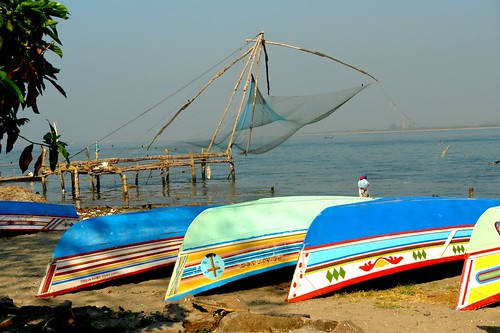
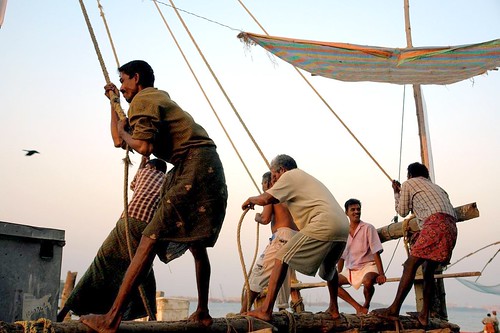
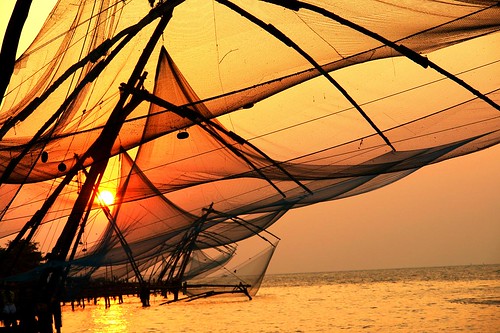
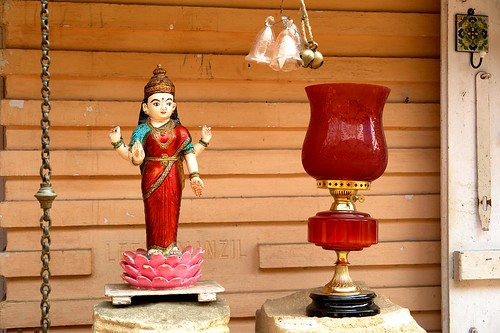
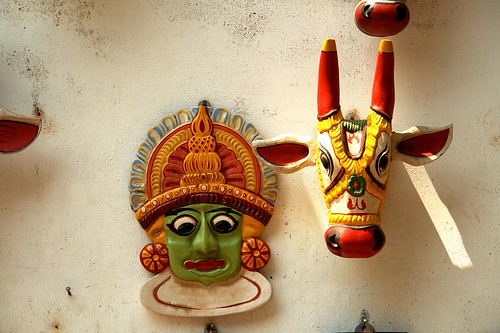

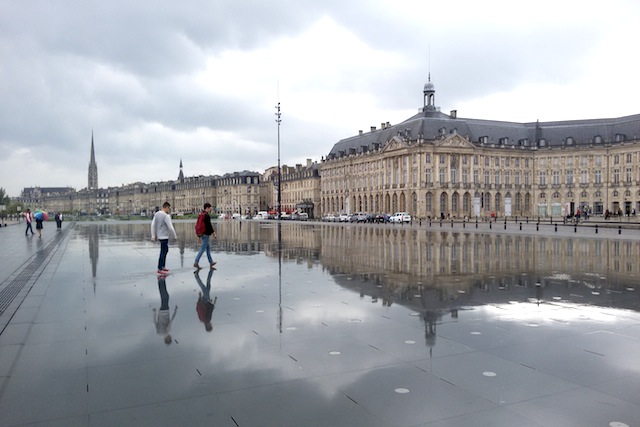
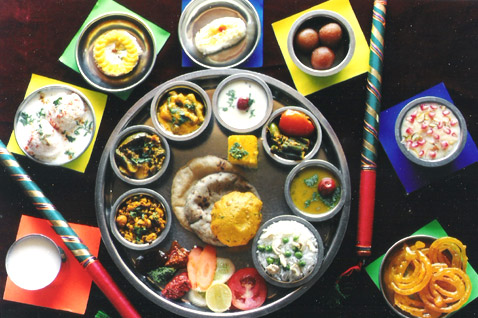
Nicely written and perfect pictures,
reminding me of my two visits -1991 and
1993 to Kochi.
I must go again is the feeling i get after reading,
and looking at pictures.
Great article. I liked reading about the history of Kochi. We visited last winter, but the synagogue and St Francis church were closed that day!
This sounds beautiful! Great article, awesome perspective, and makes the place sound very inviting!
Wow … awesome pics, great narrative. Another feather in your cap!
I can’t wait to visit this place & I love your photos!
Chinese fishing nets at Fort Kochi are very charming. The mix of dutch, portuguese, british and Indian culture makes it look very different from Ernakulam.
Loved the article especially, the way you have portrayed Fort Kochi. I, currently live in Kochi and I am so awed by the way you have detailed everything including the history. I have been to Fort Kochi several times.
Thank you so much – am glad you enjoyed the story 🙂